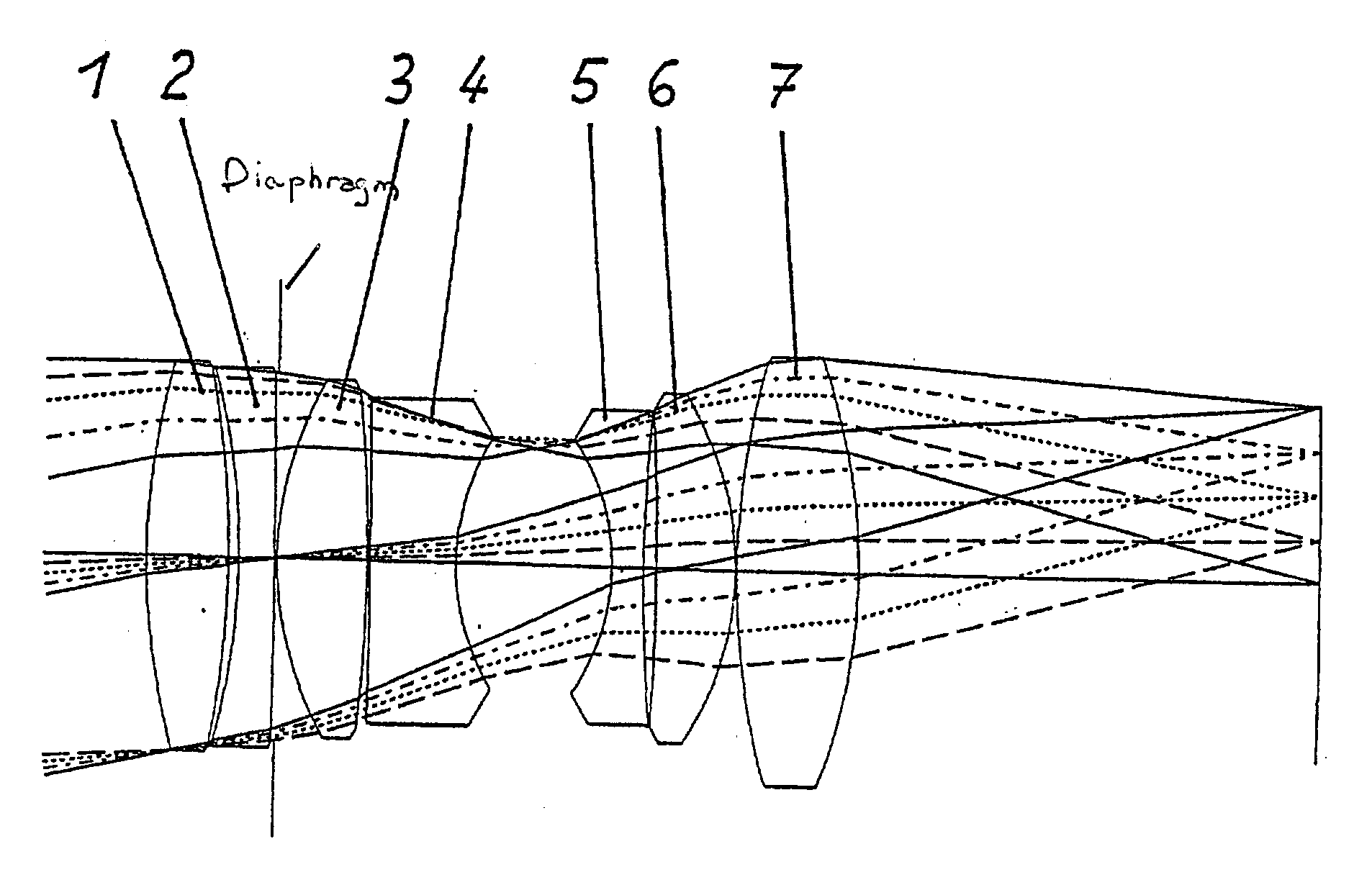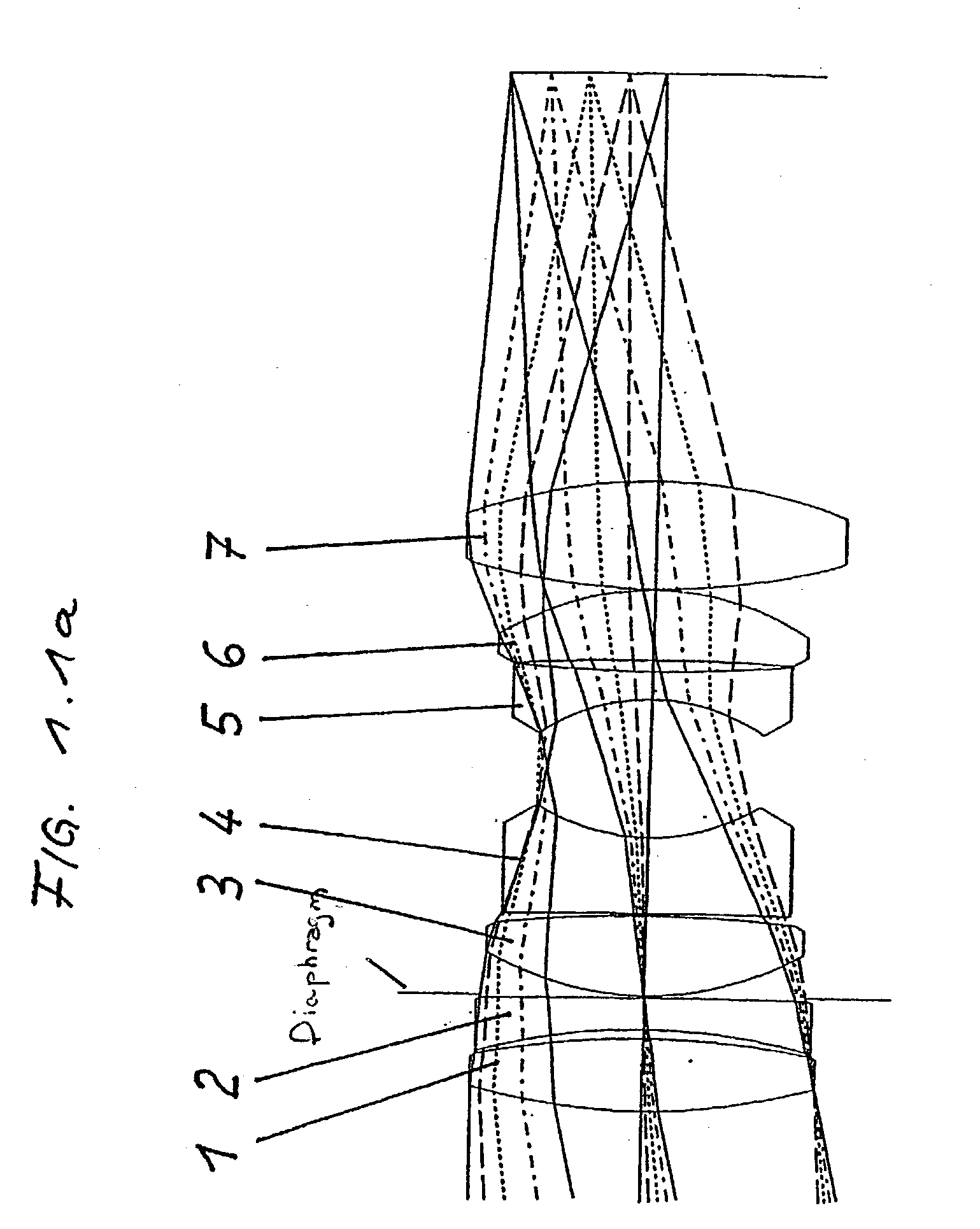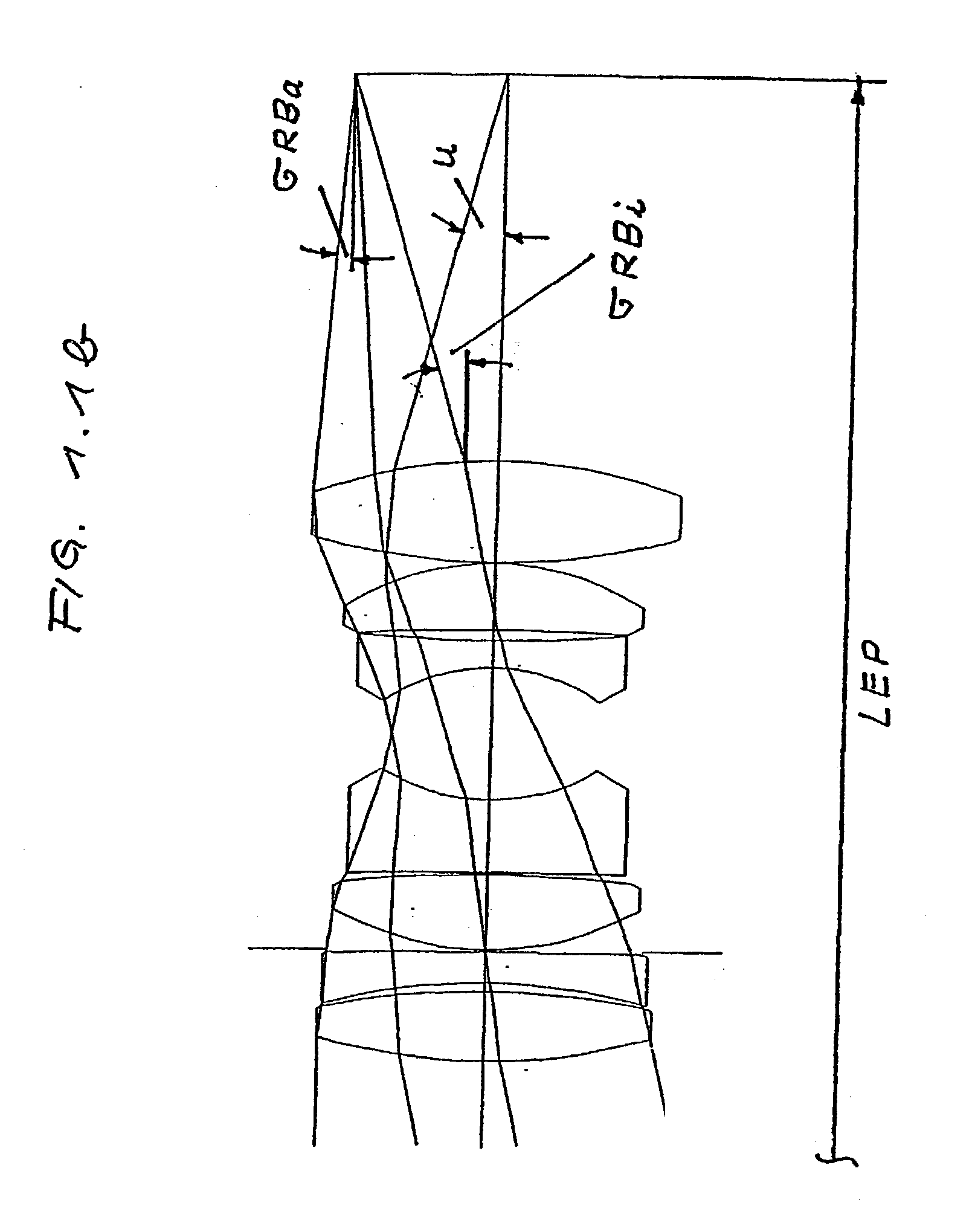Projection objective
a technology of projection objective and projection lens, applied in the field of projection objective, can solve the problem of substantially worse reproduction quality
- Summary
- Abstract
- Description
- Claims
- Application Information
AI Technical Summary
Benefits of technology
Problems solved by technology
Method used
Image
Examples
Embodiment Construction
[0014] Preliminary Remark:
[0015] For practical reasons, the sectional views, flux progressions and evaluation of reproduction quality in the following illustrations refer to a reversed position opposite the projection objective's position of use (reproduction from enlarged to shrunk side.) The entrance's intersection width s=infinite. Therefore the original object is inevitably turned toward the image and reversed. This reversal is referenced colloquially. An exception to this is pupil reproduction (orientation in position of use). This should be noted in the following explanations.
[0016] The following illustrations exhibit the luminous projection objective with a curved image area according to claim 3:
[0017] 1.1a System's sectional view with numbered lenses and flux progression on the meridional level for the reproduction of different object points. The diaphragm is located between lenses 2 and 3.
[0018] 1.1b System's sectional view with flux progression on the meridional level for ...
PUM
 Login to View More
Login to View More Abstract
Description
Claims
Application Information
 Login to View More
Login to View More - R&D
- Intellectual Property
- Life Sciences
- Materials
- Tech Scout
- Unparalleled Data Quality
- Higher Quality Content
- 60% Fewer Hallucinations
Browse by: Latest US Patents, China's latest patents, Technical Efficacy Thesaurus, Application Domain, Technology Topic, Popular Technical Reports.
© 2025 PatSnap. All rights reserved.Legal|Privacy policy|Modern Slavery Act Transparency Statement|Sitemap|About US| Contact US: help@patsnap.com



